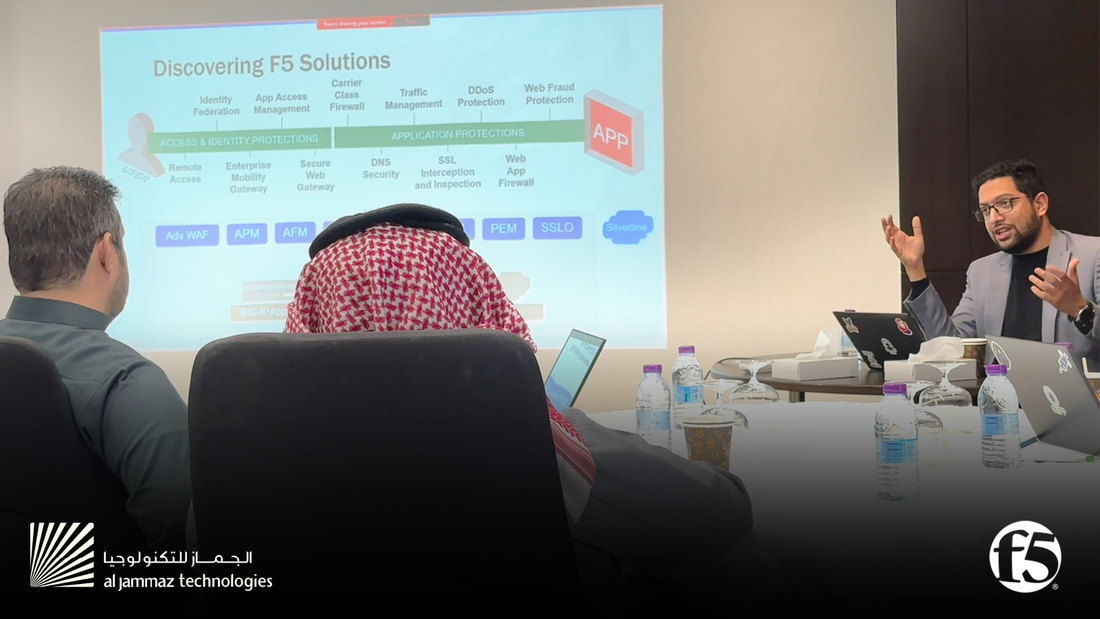In today's digital age, network performance, scalability, and high availability are paramount for businesses to thrive. Load balancing plays a crucial role in ensuring optimal network operations, and F5 LTM devices have emerged as the go-to solution for efficient traffic distribution. AlJammaz Technologies recently conducted a comprehensive training session on F5 LTM, empowering end-users to harness the power of load balancing and achieve network excellence. Let's delve into the highlights of this successful training program.
Mastering the Art of Load Balancing:
Load balancing is the secret ingredient behind seamless network operations. It evenly distributes traffic across servers, preventing overloading and optimizing resource utilization. Through their 5-day training program, AlJammaz Technologies equipped participants with the knowledge and skills to master load balancing techniques using F5 LTM devices.
Configuring, Troubleshooting, and Optimizing F5 LTM Devices:
The training covered a wide range of topics, starting from the basics of load balancing to advanced configuration and troubleshooting techniques specific to F5 LTM. Attendees gained hands-on experience in configuring F5 LTM devices, ensuring efficient traffic distribution, and resolving potential issues. Moreover, they learned optimization strategies to maximize performance and scalability, enabling organizations to meet the demands of today's dynamic networks.
Real-World Applications and Interactive Learning:
AlJammaz Technologies believes in practical learning experiences. The training program integrated hands-on exercises and real-world use cases, allowing participants to apply their newfound knowledge in simulated scenarios. This interactive approach not only enhanced their skills but also provided the confidence to tackle complex network challenges using F5 LTM.
Configuring, Troubleshooting, and Optimizing F5 LTM Devices:
The training covered a wide range of topics, starting from the basics of load balancing to advanced configuration and troubleshooting techniques specific to F5 LTM. Attendees gained hands-on experience in configuring F5 LTM devices, ensuring efficient traffic distribution, and resolving potential issues. Moreover, they learned optimization strategies to maximize performance and scalability, enabling organizations to meet the demands of today's dynamic networks.
Load balancing is the secret ingredient behind seamless network operations. It evenly distributes traffic across servers, preventing overloading and optimizing resource utilization. Through their 5-day training program, AlJammaz Technologies equipped participants with the knowledge and skills to master load balancing techniques using F5 LTM devices.
Configuring, Troubleshooting, and Optimizing F5 LTM Devices:
The training covered a wide range of topics, starting from the basics of load balancing to advanced configuration and troubleshooting techniques specific to F5 LTM. Attendees gained hands-on experience in configuring F5 LTM devices, ensuring efficient traffic distribution, and resolving potential issues. Moreover, they learned optimization strategies to maximize performance and scalability, enabling organizations to meet the demands of today's dynamic networks.
Real-World Applications and Interactive Learning:
AlJammaz Technologies believes in practical learning experiences. The training program integrated hands-on exercises and real-world use cases, allowing participants to apply their newfound knowledge in simulated scenarios. This interactive approach not only enhanced their skills but also provided the confidence to tackle complex network challenges using F5 LTM.
Configuring, Troubleshooting, and Optimizing F5 LTM Devices:
The training covered a wide range of topics, starting from the basics of load balancing to advanced configuration and troubleshooting techniques specific to F5 LTM. Attendees gained hands-on experience in configuring F5 LTM devices, ensuring efficient traffic distribution, and resolving potential issues. Moreover, they learned optimization strategies to maximize performance and scalability, enabling organizations to meet the demands of today's dynamic networks.


 RSS Feed
RSS Feed